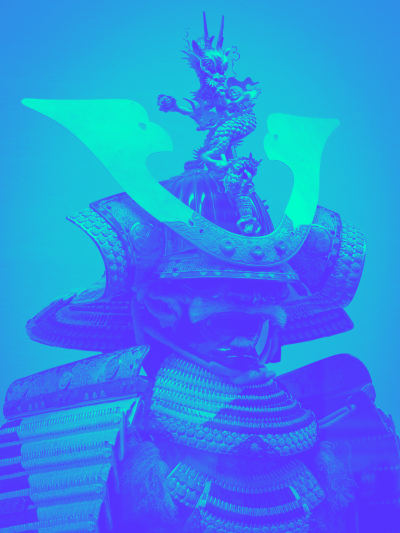The sword, which we in the West are encouraged to beat into plowshares, and the correct techniques and mentality for using it are the main topics of the three essays presented here. The essays, two of which were letters to master swordsmen, were written by a Zen monk, Takuan Sōhō, whose vow was the enlightenment and salvation of all sentient beings. What business a priest of Buddhism had with an instrument of destruction and advice on how to become more proficient with it is unlikely to be immediately clear to the Western reader.
The sword and the spirit have long been closely associated by the Japanese. In both history and mythology, the sword figures as an instrument of life and death, of purity and honor, of authority and even of divinity. Historically, it was possession of the iron sword that helped secure the islands for the migrants from the Asian mainland in the second and third centuries CE, the success of that conquest raising the sword to an object of ceremony as well as one of victory. Mythologically, it was the sword found within the Yamata no Orochi, a dragonlike serpent killed by the god of storms, that was to become one of the Three Imperial Regalia, symbols of power and purity revered by the Japanese for nearly two millenia. Practically, it has been the samurai class, with the sword on one side and the spiritual on the other, that has been the inspiration for many of the country’s lasting values.

This association was not dimmed by the conversion of the samurai to other occupations a little over a century ago. Even today, the infrequent forging of a new Japanese sword takes place in a highly spiritual atmosphere. The work itself is preceded by prayers to the proper divinities and the performance of purification rites, and is executed while wearing ceremonial robes without and maintaining a reverential frame of mind within. The owner of the sword is expected to respond to his good fortune in a like mentality; and, indeed, when the Japanese businessman finds a quiet moment at home to unwrap, unsheathe, and lightly powder his sword against rust, it is considered to be an exercise in meditation, not the idle admiration of a work of art.
The sword, the spiritual exercise, and the unfettered mind are the pivots upon which these essays turn. With effort and patience, the writer reminds us, they should become one. We are to practice, practice with whatever we may have at hand, until the enemies of our own anger, hesitation, and greed are cut down with the celerity and decisiveness of the stroke of a sword.
There are several editions of the works included here, but they seem to be without significant differences. I have based these translations on the texts given in Nihon no Zen Goroku, Vol. 13, which in turn uses those found in Takuan Oshō Zenshō published by the Takuan Oshō Zenshō Kankō Kai.
In appreciation I would like to sincerely thank Ms. Agnes Youngblood, who helped me through parts of the translation where I had the most difficulty; John Siscoe for his encouragement and suggestions; and Prof. Jay Rubin and Teruko Chin of the University of Washington for helping me with background material over a distance of four thousand miles and a few inches of snow. Any and all mistakes are my own.
